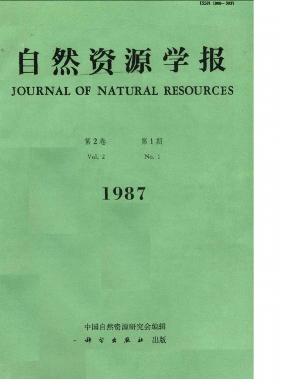Special Column:Celebration of the 70th Anniversary of IGSNRR, CAS
Qi Wenhu
The resource carrying capacity calculating is a important base for establishing population growth planning, economic development planning, energy planning, and so forth. This paper gives a brief review of erlier approaches to carrying capacity calculation and assessment ,inclu-ding those of population supporting capacity-considering food only, the potential population supporting capacity of lands (FAO), population supporting potential of Australia, and ECCO model. UNESCO's definition: "The number of people sharing a given territory which can for the foreseeable future and in accodance with the socio-cultural value of that territory, sustain a given standard of living utilising energy and other physical resources, as well as technology, enterprise and skills" is adopted in this paper. Based on such a basic point of view, that resource carrying capacity is a changeable value, which can be enhanced or damaged, and for better serve as a planning tool, author emphasizes the necessity of constructing a systems danymics model to give the integrated expression of the interrelationship between population, resources, environment and development.The paper gives a brief introduction about systems dynamics model, including those basic concepts like feedback, feedback loop, delay, nonlinear, level or state, and those basic elements-stock, flow, information flow, and so on. In this paper, author presents a systems dynamics model for resource carrying capacity calculating expressed by influence diagram, which includes seven subsystems: population, environment, industry, energy, agriculture, culture-education-health, capital formation, and gives the qualitative explanation of these subsystems and interra-lationships between those subsystems. Differ from ECCO model, which emphasizes mainly on the role of energy, this model puts its base on the land use subsystem or the agricultural sector in other words. The land use subsystem is expressed by a causal loop diagram, which consists of four kinds of land use: crop, forest, pasture and city. This subsystyem can be connected with the influence diagram of the model to construct the entity of the system.This paper have not adopted mathematical expression, it points out the difference between the types of data used by static model and of this model. It gives the ways of data collecting and processing to formulate those function relations between two variables in order to satisfy the requirments of the mathematical model, and presents an example: "fertility in relation to income". By four groups of curves of expressing outputs of this model, author gives the results of pilot study of carrying capacity calculating method, and indicates the difference between the contents coming from static and from this model. By running this model we can obtain more information than those models provide. Using earlier approaches, we can understand clearly the long term effects of realizing a certain decision making, and the dynamic relationship between the processes of opulation growth and carrying capacity enhancement. So we can conclude that the systems dynamics model is a kind of useful tool to calculate resource carrying capa-cry.
